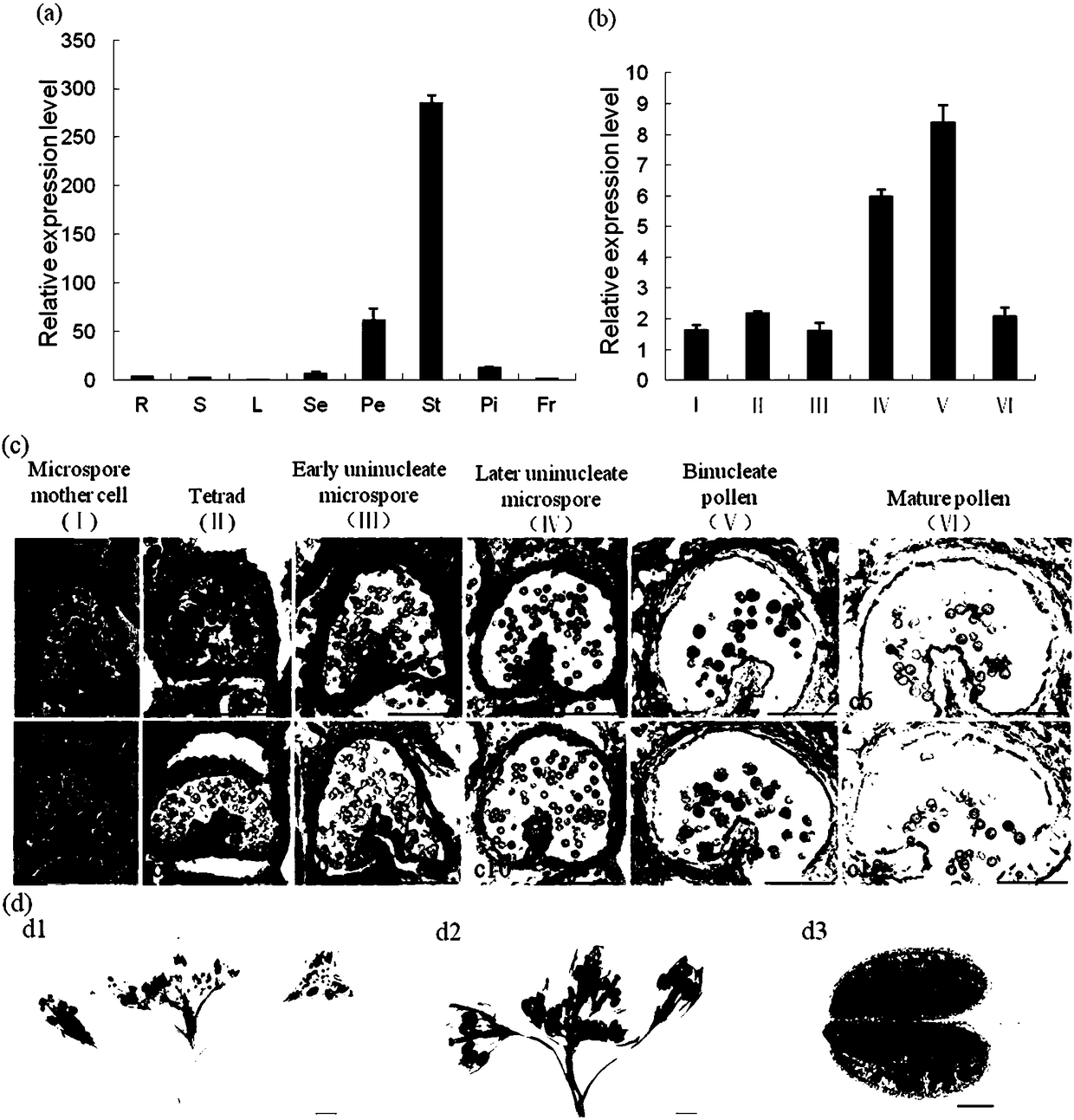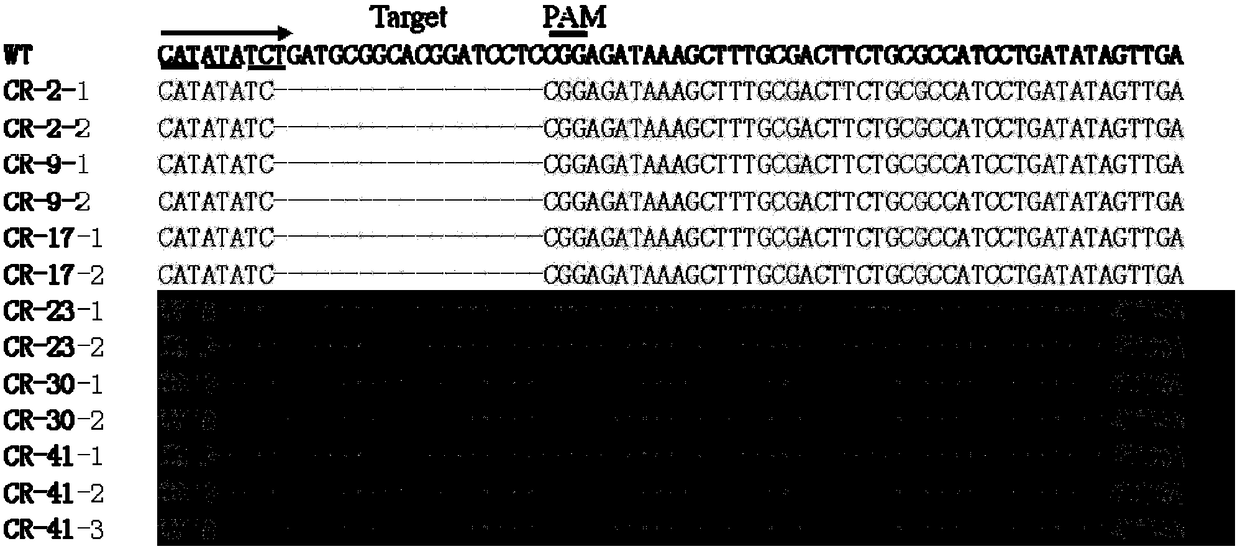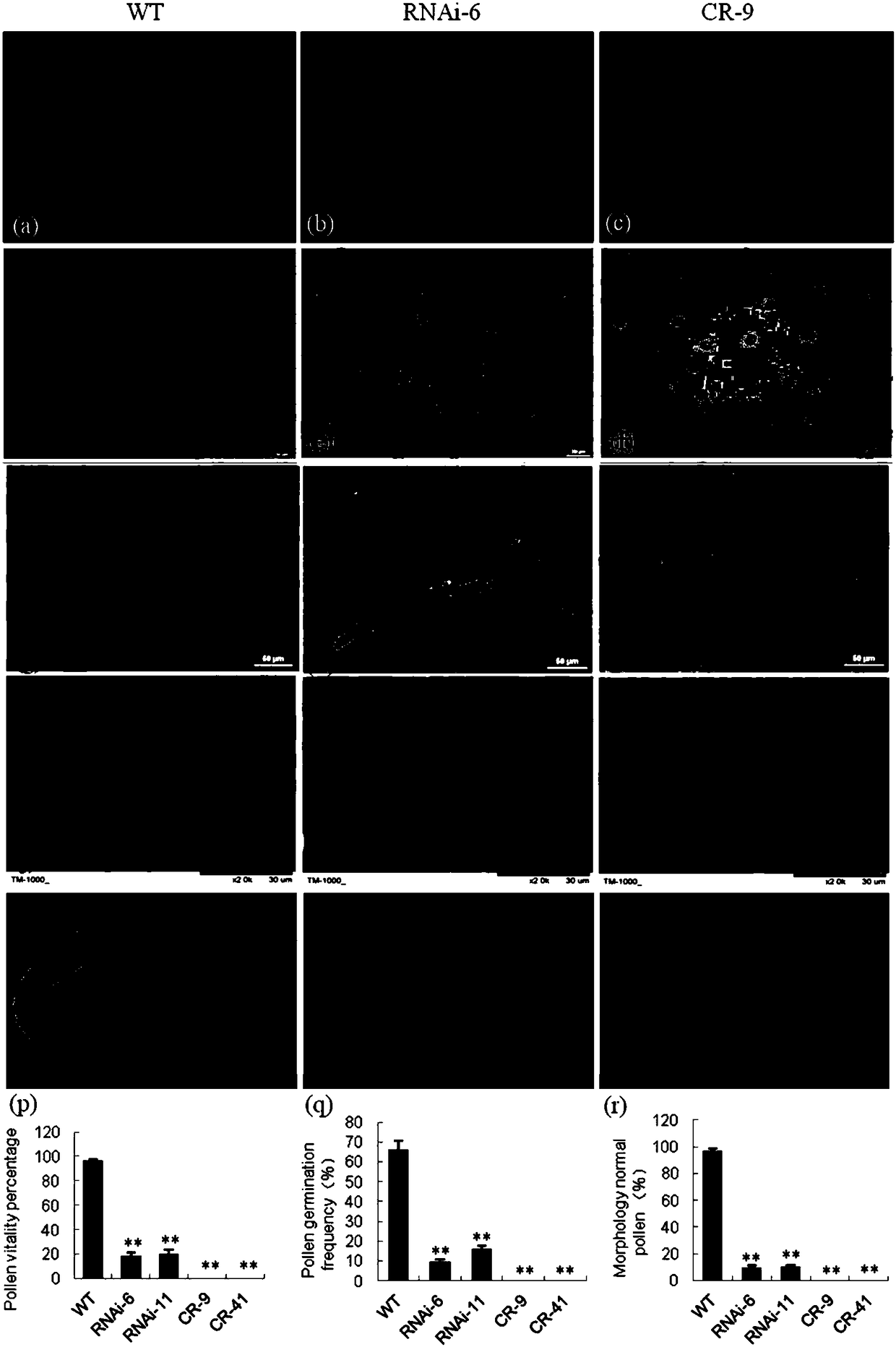Application of tomato SlMPK20 gene in creating tomato genic male sterile line
A male sterile line and gene technology, applied in application, genetic engineering, introduction of foreign genetic material using vectors, etc., can solve the problems affecting plant vegetative growth, stress resistance and disease resistance, transgenic materials cannot be completely aborted, knockout In addition to tomato genes and other issues
- Summary
- Abstract
- Description
- Claims
- Application Information
AI Technical Summary
Problems solved by technology
Method used
Image
Examples
Embodiment 1
[0022] Example 1: qRT-PCR analysis of the spatiotemporal expression of SlMPK20 in different tissues and organs of tomato
[0023] Using qRT-PCR technology to study the spatiotemporal expression pattern of SlMPK20, it was found that SlMPK20 was expressed in different tissues, with the highest expression in stamens, and only a small amount of expression in roots, stems, leaves and young fruits. SlMPK20 was expressed in the six stages of tomato stamen development, and the expression level of SlMPK20 gene was the highest in the middle and late mononucleate stage to the binucleate stage ( figure 1 a, 1b). The specific method is as follows:
[0024]Using the cDNA of roots, stems, leaves, calyxes, petals, stamens, pistils, green mature fruits, flower buds (Bud I-Ⅴ) and fully open flowers (F) at different stages as templates, the SYBR Premix Ex Taq from TAKARA Company was used for quantification The kit was performed on a fluorescent real-time quantitative PCR instrument (CFX96, Bio...
Embodiment 2
[0025] Example 2: In situ hybridization analysis of the expression of SlMPK20 in tomato stamens at different developmental stages
[0026] In order to further accurately locate the position of the SlMPK20 transcript in stamens, the present invention cloned a specific fragment of 302bp in SlMPK20, and the upstream and downstream primers were Yw-SlMPK20-F: 5'-GCTCTAGAGCTTGGAACGCCTTCAATGG-3'; Yw-SlMPK20-R: 5 '-CGGGATCCCCTCCTTCGTCACTCTTCGC-3', using tissue in situ hybridization to analyze the expression of SlMPK20 in wild-type tomato 'Micro-Tom' Ⅵ stamens, that is, cell blast stage, tetrad stage, early mononucleate, middle and late mononucleate, Dual-core period, mature period. The results showed that the hybridization signal began to appear at the tetrad stage, and was weaker at the early and late uninucleate stages, and a stronger hybridization signal was observed at the binucleate stage. No hybridization signal was observed in the parental stage, mature stage, and the control ...
Embodiment 3
[0027] Example 3: Isolation and expression activity analysis of SlMPK20 promoter sequence
[0028] In this study, the promoter sequence of 2000bp upstream of SlMPK20 was isolated from tomato SGN database. Using tomato stamen cDNA as a template, specific primers were designed to amplify the 1964bp promoter sequence upstream of the SlMPK20 gene (as shown in SEQ ID No.2); Pro-SlMPK20-F: 5'-CCAAGCTTGACAATCACCTTTTCTACGTGTTC-3'; Pro-SlMPK20-R : 5'-CTAGTCTAGACCGAATCGAGTGATCCAAGT-3'), it was connected to pBI121, and the promoter vector pBI121-SlMPK20Pro-GUS was constructed. SlMPK20 can initiate expression in inflorescences ( figure 1 d). Further confirming the promoter activity of SlMPK20, it was found that the obvious signal first appeared in the tetrad stage, while in the uninucleate stage, the signal in the peripheral tissue was stronger and the signal in the pollen grain was weakened, and the obvious signal could also be detected in the pollen grain in the binucleate stage. GUS...
PUM
 Login to View More
Login to View More Abstract
Description
Claims
Application Information
 Login to View More
Login to View More - R&D
- Intellectual Property
- Life Sciences
- Materials
- Tech Scout
- Unparalleled Data Quality
- Higher Quality Content
- 60% Fewer Hallucinations
Browse by: Latest US Patents, China's latest patents, Technical Efficacy Thesaurus, Application Domain, Technology Topic, Popular Technical Reports.
© 2025 PatSnap. All rights reserved.Legal|Privacy policy|Modern Slavery Act Transparency Statement|Sitemap|About US| Contact US: help@patsnap.com



